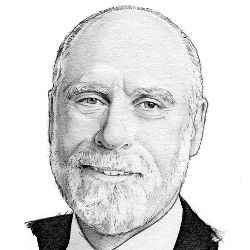
As I write this, I have just come off a conference call with White House representatives from the Office of Science and Technology Policy including Megan Smith, the U.S. Chief Technology Officer, Thomas Kalil, the Deputy Director for Technology and Innovation, among many others. Highlighted was President Obama’s "Computer Science for All" programa that is proposing $4B to the states and $100M directly to expand K–12 computer science in the U.S. by training teachers, providing access to instructional materials, and building regional partnerships. The National Science Foundation (NSFb) and the Corporation for National and Community Service (CNCSc) will provide an immediate $135M into the program. The earlier CS10Kd program provided computer science principles and exploring computer science curriculum materials to introduce the subject to students who might not have otherwise considered it. Topics include human-computer interaction, problem solving, Web design, programming, computing and data analysis, and robotics.
Computer science is in significant measure all about analyzing problems, breaking them down into manageable parts, finding solutions, and integrating the results. The skills needed for this kind of thinking apply to more than computer programming. They offer a kind of disciplined mind-set that is applicable to a broad range of design and implementation problems. These skills are helpful in engineering, scientific research, business, and even politics! Even if a student does not go on to a career in computer science or a related subject, these skills are likely to prove useful in any endeavor in which analytical thinking is valuable.
Establishing and bolstering CS education for school-age children is a challenge felt globally. In the U.S., progress has been painfully slow. What is very gratifying about this announcement is that ACM has long had an aspiration to make computer science a normal part of school curriculum in the U.S., especially in K–12 (in fact, the April issue will feature a news story detailing ACM’s involvement in the CS for All program). It is hoped this effort, with the funding that enables it, will make computer science as acceptable as physics, chemistry, and biology for satisfying curricular requirements for high school graduation. Moreover, the appearance of computer science in the elementary and middle school curriculum may attract a much broader range of students to careers involving computing. It is my belief that many potential computer science and electrical engineering students are lost to these disciplines because they have not had the opportunity to explore them early enough in their school years to discover their power and attraction.
With such a program in place, ACM’s members have new opportunities to engage in the K–12 space to convey their interest and fascination with the many facets of computer science. When this is combined with the so-called maker culture,e it seems to me a powerful recipe for progress emerges. Students learning by doing, sharing their work, and learning from each other creates a force to be reckoned with. One of the drivers of the maker culture is 3D printing.f Like the evolution of the World Wide Web and the webmasters whose pages we all enjoy, the 3D printing world offers the opportunity for inventors and designers to share their designs, to learn from one another, and to advance the state of the art through collaborative processes.
Anyone who has watched children as young as three years old playing with tablets and even smartphones must appreciate the newest generation(s) are steeped in software and comfortable with its use in a way earlier generations were not. It is sometimes said "Technology is what you didn’t grow up with." If you grew up with it, it is just there. No big deal. For someone who began life with a three-party telephone and no television, let along computers, I find myself thinking I should have a T-shirt made reading "Don’t look back, there is a three-year-old gaining on you!"
However you read the tea leaves, the new CS for All program is a major step forward for all of us who believe that exposure to computer science and its way of thinking is in everyone’s best interest.



Join the Discussion (0)
Become a Member or Sign In to Post a Comment